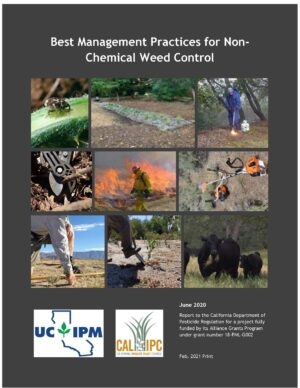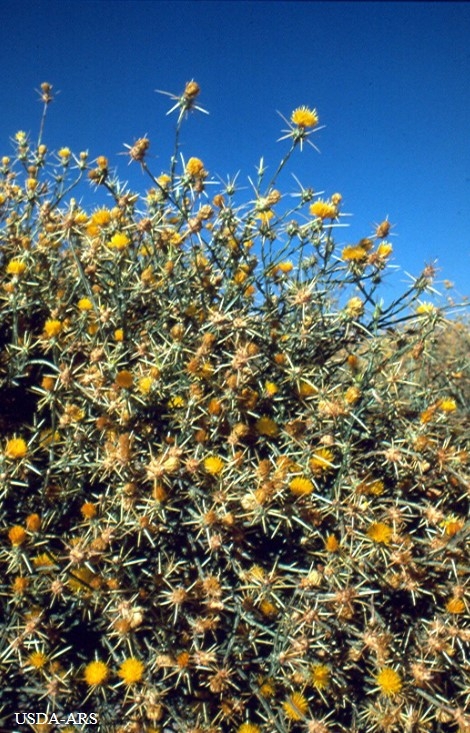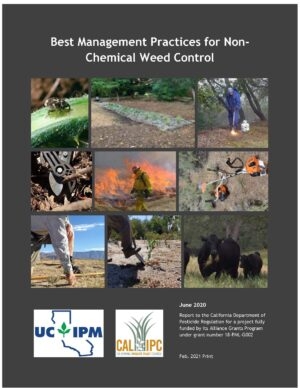BMPs for Non-Chemical Weed Control
This manual provides comprehensive descriptions of 21 commonly used non-chemical weed control techniques and of biological control agents for 18 weed species/species groups that will help you as a practitioner treat weeds more effectively.
Authors of each chapter have compiled research and on-the-ground knowledge of subject experts on tools and methods of application, as well as on efficacy of techniques under various environmental conditions and across different classes of invasive plants. Environmental, cultural, and human safety risks are also highlighted to help support safe and effective use of techniques. This manual is designed to be a go-to resource for practitioners that are either complementing their weed control work with non-chemical techniques or are exclusively restricted to not using herbicides. Individual BMPs will be incorporated into an online decision support tool still in development.
There is a section on biological control agents. Approved biological control agents can be distributed within California without a permit, and most can also be distributed across state lines (based on prior permits). The main exception is when an agent that has been approved by USDA-APHIS has not been approved for California (e.g. Aceria malherbae for field bindweed) or whose permit was rescinded (Diorhabda spp. for saltcedar).
The best source of information is:
Smith, L., Pitcairn, M.J., Moran, P.J. 2020. Biological Control, pp. 193-291. In: Best Management Practices for Non-Chemical Weed Control. Report to the California Department of Pesticide Regulation under grant number 18-PML-G002. California Invasive Plant Council. 291 p. 115 p.
https://www.cal-ipc.org/resources/library/publications/non-chem/
This is a free pdf document that has chapters on each target weed that has approved biological control agents in California.
Regarding yellow star thistle, 6 agents have been released in California and were widely distributed. In general, only a few of these are abundant enough to have impact, and some of them do better than others in specific habitats. For example, the hairy weevil (Eustenopus villosus) is more abundant in the Sierra Foothills and Coastal Hills and the false peacock fly (Chaetorellia succinea) is more abundant in the Central Valley. However, it is possible that they are not necessarily established at your particular site. It's recommended to first look to see what is there already. If insects are present, then it is not worth releasing more, but you may be able to adjust your integrated management plan to take advantage of their presence (see recommendations in the above BMP document. The hairy weevil and false peacock fly are the most abundant species in California. The newly-approved rosette weevil (Ceratapion basicorne) is being multiplied by CDFA, and is not yet widely available.
Best Management Practices for Non-Chemical Weed Control
This manual is available as a free download. Click here for a PDF of BMP for Non-Chemical Weed Control. (291 pp., 21.5 MB)
- Contents:
- Removing Whole Plants (5 techniques)
- Controlling Plants by Cutting (6 techniques)
- Controlling Plants in Place (3 techniques)
- Covering Plants with Sheet Barriers (3 techniques)
- Controlling Plants at a Plant Community Scale (4 techniques)
- Biological Control (general introduction and descriptions of agents for 18 weed species/species groups)


